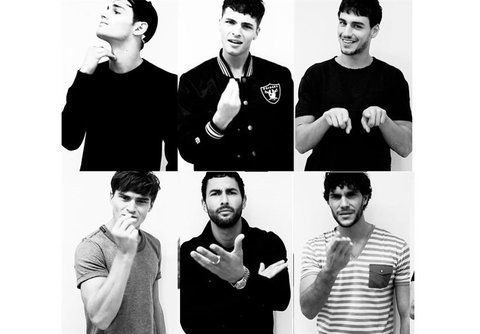The results of the study, led by Judith Holler of the Max Planck Institute for Psycholinguistics and Radboud University Nijmegen in the Netherlands, was published in Springer's journal Psychonomic Bulletin & Review.
The transition between turns taken during a conversation is astonishingly fast, with a mere 200 milliseconds typically elapsing between the contribution of one speaker to the next. Such speed means that people must be able to comprehend, produce and coordinate their contributions to a conversation in good time.
To study the role of gestures during conversation, Holler and her colleagues analyzed the interaction of seven groups of three participants. The groups were left alone in a recording suite for twenty minutes, during which their interaction was filmed with three high-definition video cameras. The researchers analyzed the question-response sequences in particular because these are so prevalent in conversations. Holler and her team found that there was a strong visual component to most questions being asked and answered during the conversations. These took the form of bodily signals such as communicative head or hand movements.
"Bodily signals appear to profoundly influence language processing in interaction," said Holler. "Questions accompanied by gestures lead to shorter turn transition times -that is, to faster responses- than questions without gestures, and responses come even earlier when gestures end before compared to after the question turn has ended."
"The empirical findings presented here provide a first glimpse of the possible role of the body in the psycholinguistic processes underpinning human communication," explains Holler. "They also provide a stepping stone for investigating these processes and mechanisms in much more depth in the future."


Your Comment